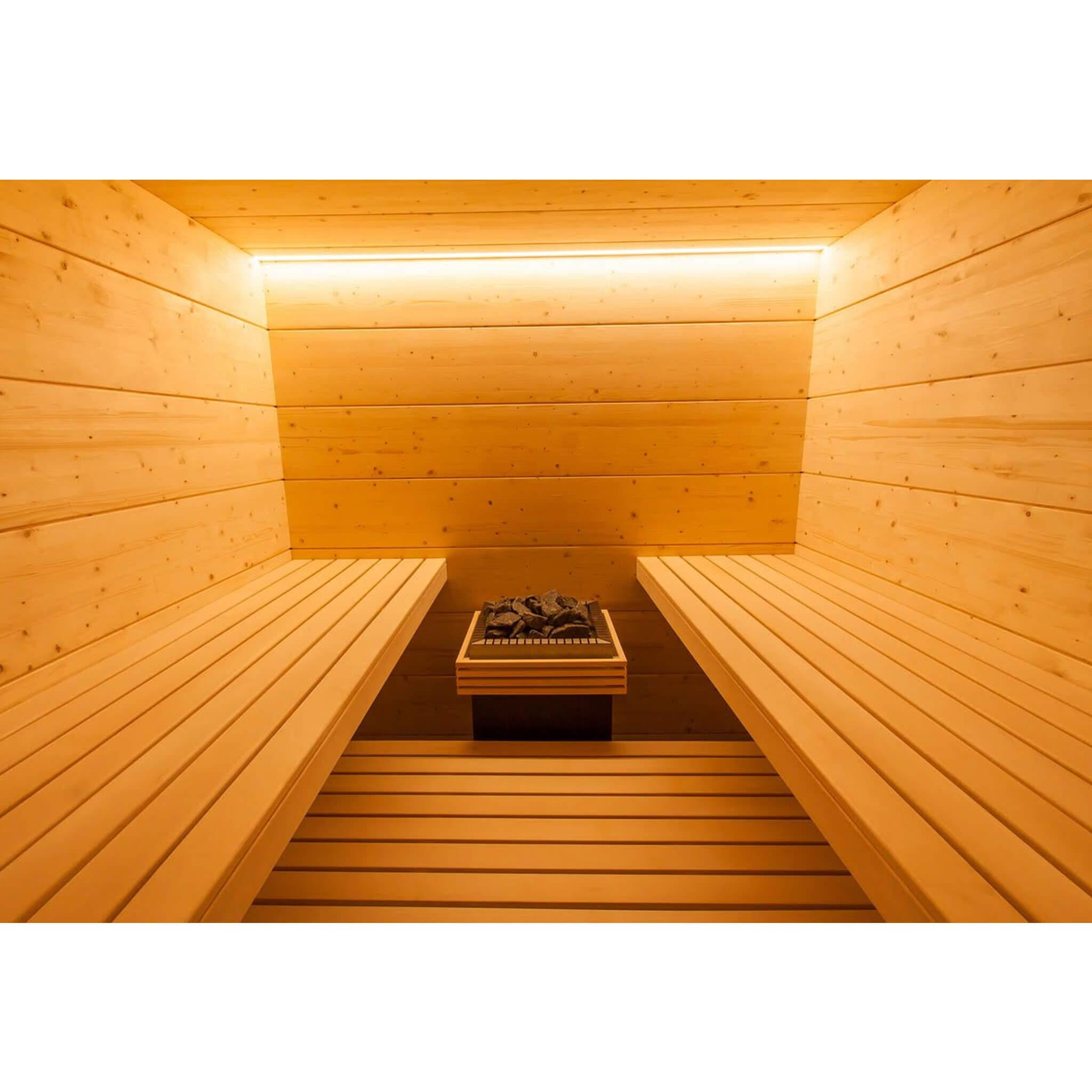6 Simple Techniques For Traditional Sauna
6 Simple Techniques For Traditional Sauna
Blog Article
Indicators on Traditional Sauna You Should Know
Table of ContentsMore About Traditional SaunaTraditional Sauna Fundamentals ExplainedTraditional Sauna Fundamentals ExplainedExamine This Report on Traditional Sauna
Many of the weight shed in a sauna is water loss and is re-gained upon rehydrating. Without an uncertainty sauna can be a vital component of a healthy and balanced weight loss program. To check out the differences in between standard and IR saunas, I will certainly divide these right into verifiable, academic, and fabricated differences.Therefore, the hottest factor in the saunawhich is at the ceiling directly above the sauna heateris usually in between 185 and 190 F. Traditional Sauna. Claims that a standard sauna exceeds 200 F is simply not real and not suitable for electrical saunas offered in the US. The temperature for a far-infrared sauna is normally established between 120 and 140 F; however, unlike the conventional sauna, the goal in and IR space is not to accomplish a high temperature level
Due to this, the temperature level difference is almost unnecessary, considering that profuse sweating leads to both sauna kinds, yet the method of warming the body is various. In an IR sauna the bather will feel warm and will sweat a lot, but at a lot reduced temperature levels. Thus, if the goal is to spend longer periods of time in the sauna, the IR sauna is a great selection.

Little Known Facts About Traditional Sauna.
When the high temperature is attained, the aspects cycle on and off to maintain the high temperature. A lot of conventional sauna individuals enjoy putting water over the rocks to develop steam to increase sauna moisture degrees. The advantages of pouring water over the rocks include: making the area much more comfortable, moistening the nasal passages, and permitting the usage of aromatherapy by mixing essential oils with the water.
In a far-infrared sauna, the warm front permeate the body to effectively heat up the body and raise the body core temperature level. To attain this increased temperature, Far-infrared emitters create infrared energy which is close to the exact same wavelength as that which the body normally emitsoften described as the "Important Variety" of 7 to 14 microns), so the power is well obtained by the body.
When the energy enters the body, it causes the body temperature level to boost and eventually causes perspiration. In an infrared sauna it is necessary for the emitters/heaters to remain on virtually constantly. Given that there is no mass of rocks to retain heat, the sauna will cool if the emitters closed off.
As discussed above, the sauna bather in an infrared room wishes to place himself in front of operating emitters to obtain maximum take advantage of the warm. The home heating time for both spaces can be really different, depending upon just how the rooms are made use of. For a standard sauna, a bather should allow 30-40 mins for the room to achieve a preferred temperature level and to effectively pre-heat the rocks.
Getting My Traditional Sauna To Work
A well created sauna will typically accomplish a temperature Visit Your URL of 150-160 F in about 30-40 mins. For hotter temperature levels, the area might require to heat for a longer period.
To some, 15 mins was "squandered" while the infrared power heated the wood panels instead of heating up a body, while others locate a pre-heated area to be a lot more comfy and think a raised starting temperature level is required to begin sweating. my response The length of advised usage for every room is roughly the very same (10-15 mins per session); however, as a result of the reduced air temperature levels and the capability to feel the effects of infrared heat quicker than a standard sauna, it is not uncommon for an individual to spend an overall of 20-30 mins in an infrared sauna.
Conventional saunas have a tendency to be bigger (for this reason use even more electrical power) than infrared saunas, although traditional saunas are absolutely offered in one and two person dimensions. For a two-person traditional sauna, 5x6 or 5x7 dimension is most preferred. The top bench can comfortably seat 2 or three people and is likewise enough time to lie down during the sauna session.


The average price per kWH of power in the united state is about $0.11, so a 4.5 kW heating system will cost around $.50 to compete one hour, if the heating system runs continually for one hour. Typically a sauna heating unit will certainly compete 75% of the initial hour and 50% of succeeding hours on considering that the elements cycle once the established temperature level is achieved.
Traditional Sauna - An Overview
A 2 person far-infrared space is generally literally smaller than a standard sauna, frequently regarding 4' x 4' or smaller sized. The IR heating unit is typically 1.5-1.7 kW using a 120 volt 15 amp plug-in solution. Because the room can be utilized quicker than a sauna room, we will certainly assume the area is utilized for to of an hour consisting of warm up time.
There is a seldom reviewed distinction in the social experience between the 2 rooms. While our culture has lost several of the social benefit of the traditional sauna experience, it can be very socially website link fulfilling. From family time in the sauna, to heart-felt discussions with better halves, to sauna partiesthe typical sauna experience can result in intimate mingling.
Many greater end infrared rooms consist of tinted light treatment, noise systems and full-glass fronts.
Report this page